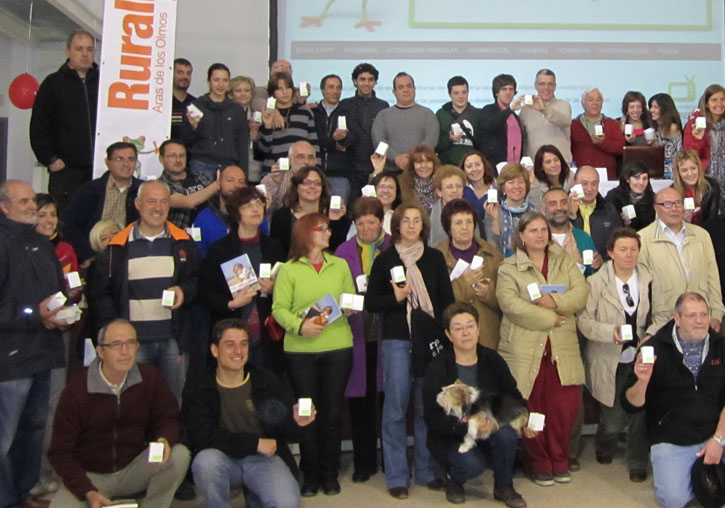The Big History project unites innovation and heritage to fight depopulation in Aras de los Olmos
- Scientific Culture and Innovation Unit
- October 18th, 2021

The different aids and subsidies around the project made the public spending of this municipality of the Serranía of 359 inhabitants go from 600,000 to 2,500,000 euros in a decade. Among the milestones of the project are the consolidation of the UV Astronomical Observatory, the conditioning of an Iberian site and an ethnobotanical garden or a project to convert Aras de los Olmos into a self-sufficient municipality of renewable energy. Ana Sales Ten and Joaquín Martín Cubas (Interuniversity Institute for Local Development, IIDL) have published an article that analyses the actions in the framework of the Big History project.
Depopulation is a real problem in much of the rural world. In the case of the province of Valencia, there are municipalities in the Serranía region that know this problem very closely. In the case of Aras de los Olmos, the innermost of the entire region, its fight against depopulation can only be understood through its collaboration with, among other public entities, the University of Valencia. As a consequence of the Big History project, started in 2013 in collaboration with the UV, this municipality has taken the initiative and has spent years of changes and innovation to alleviate the effects of depopulation.
“Collaboration with Valencian universities and, especially, with the University of Valencia through the Big History project, has been fundamental to change the dynamics of a municipality suffering from the typical problems associated with the phenomenon of depopulation”, as Rafael Giménez declares, mayor of Aras de los Olmos.
An article, published in the magazine TERRA. Revista de Desarrollo Local by UV researchers from the Interuniversity Institute of Local Development (IIDL) Ana Sales Ten and Joaquín Martín Cubas (promoter of the project), has collected all the political, economic, social and cultural advances produced in the population with Big History.
On the one hand, there has been a large economic investment in addition to the ordinary budgets that has increased spending due to the aid and subsidies received from the different administrations and entities. In a decade, the Aras de los Olmos City Council has gone from managing around 600,000 euros to managing around 2,500,000 euros. It has also had the support of other institutions and public bodies such as the Mancomunidad del Alto Turia, the Diputación de València or the Valencian Government and different companies, associations and organisations of the Valencian civil society.
For example, to completely replace the population’s electricity supply with the combination of four renewable energies (photovoltaic, hydraulic, wind and biomass), Aras de los Olmos is going to start this year with the installation of photovoltaic panels, which will be followed by the rest of the sources to complete the system with which they want to become a municipality capable of energy self-sufficiency.
Another example is the successive editions of the Summer University “Science and Rural Development”, the visits of Erasmus students or Master’s degree students. In addition, the project is within the international network of scientific dissemination Open Science Centers, specialised in the development of local communities through the opportunities offered by science and technology.
On the other hand, the Big History project, based on the principles of democratic governance, is clearly committed to neighbourhood participation. According to the research, there has been a process of reflection on their situation, their weaknesses and strengths, the scenarios to which they aspire, the strategic lines and the particular commitments to make it possible. Through a process started with open assemblies, residents’ volunteers were later encouraged in projects and direct democratic participation in the form of citizen consultations, on issues such as the motto of the municipality or the new corporate image of the City Council.
Another face of the project goes through the impulse of culture, history and training. Since the consolidation of the Astronomical Observatory of the University of Valencia, to the Iberian site “Castillo de la Muela” (a fortified town located in the Muela de Santa Catalina dated between the twelfth and sixth centuries BC) passing through the Ethnobotanical Garden of Medicinal and Useful Plants. The garden, nestled in an old cemetery, offers a collection of native plants for medicinal, culinary, ornamental and traditional use and was under the technical direction of the UV Botanical Garden.
The neighbours have managed to develop a social care network especially focused on the elderly (day centre, home help, active aging plans or activities) and open to other sectors of the population such as the promotion of cooperativism, especially among women, a hostel for the youth or laptops for the children.
Article:
Sales Ten, A. & Martin Cubas, J. (2021). El desarrollo de Aras de los Olmos: un análisis de caso en el marco de la economía del conocimiento y la innovación social. TERRA. Revista de Desarrollo Local, 8, 506-530. http://dx.doi.org/10.7203/terra.8.20837
















